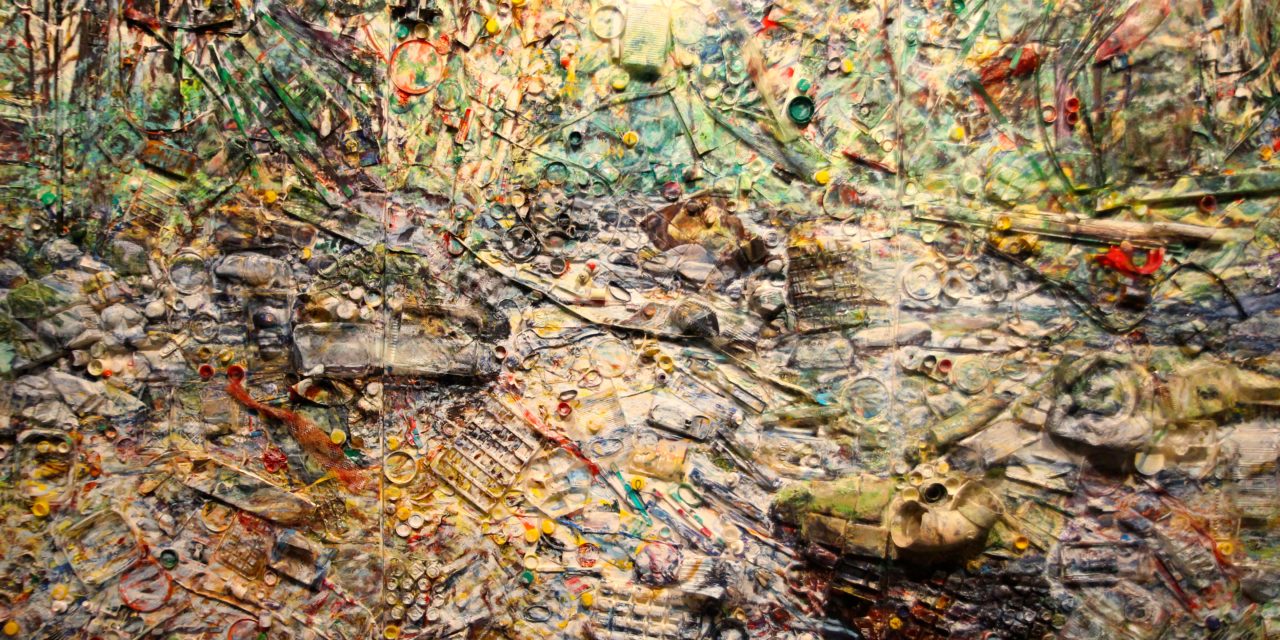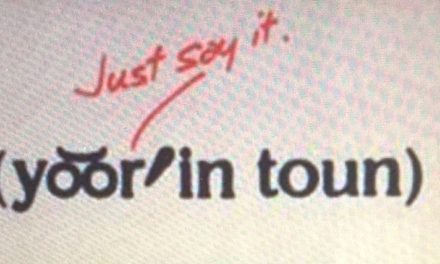(Above: Detail from Robert Dozono’s No Farm—No Food—Take Back America, Upper Clackamas #11,2009)
By Randi Bjornstad
The visual magic begins the minute you walk upstairs in the Jordan Schnitzer Museum of Art and get a glimpse through the open door of Robert Dozono’s No Farm—No Food—Take Back America, Upper Clackamas #11.
From a distance, the huge painting — its irregular shape is nearly 12 feet wide and more than 11 feet tall — looks like a beautiful, somewhat impressionistic vision of a stand of trees with a stream flowing down through it from background to foreground.

But as you gape in wonder and move even closer — really close — you see what it’s really made of and what Dozono’s message really is.
His huge creation — he describes his medium as “oil and garbage on canvas” — shows graphically just where we have been and where we are headed as a wasteful, throw-it-away society.
Every square inch is taken up by what we so blithely throw away — rubber bands, toothbrushes, bottle caps, plastics of every shape, size and use — all to end up in landfills at best, at worst in ditches, streams, and the ocean where they can glut the gullets of birds and clog and even kill sea mammals.

Debbie Williamson Smith, communications manager at the JSMA, says she’s amazed by the whole exhibit, but she finds herself especially captivated by Dozono’s object lesson, made from decades’ worth of items he collected instead of discarding and then incorporated in his art in order to make his graphic statement.
“It’s kind of like with children, how you’re not supposed to have favorites, but this piece is one I can engage with for hours,” she admitted.
The Visual Magic show will be up through May 12, and it features work by 45 artists “with Oregon connections and who rose to popularity in the 1960s and ’70s,” Williamson Smith said. “All of these works incorporate painting in some form or another.”
The exhibit grew out of a proposal from the George D. Green Art Institute, located in Oak Grove near Portland, and Green’s work is included in the exhibit. The institute focuses on showing art to children who live in geographic or socially disadvantaged circumstances, as well as sponsoring art classes, traveling exhibits and public workshops and art shows.

The breadth of styles and subjects in Visual Magic is mind-boggling, from landscape to abstract to still life to sketch to defiance of description. The show includes more than 80 discrete items.
A book, Visual Magic, has been created to accompany the show. It includes color plates of all the artwork as well as statements from the artists. The cost is $25.
Visual Magic
When: Through May 12
Where: Jordan Schnitzer Museum of Art, 1430 Johnson Lane, University of Oregon campus, Eugene
Hours: 11 a.m. to 8 p.m. Wednesday, 11 a.m. to 5 p.m. Thursday-Sunday
Admission: $5 adults, $3 ages 62+, free to children, higher education students and UO faculty and staff
Information: 541-346-3027 or jsma.uoregon.edu










